Abstract
1. Electrical activity and length of ankle muscles were recorded by telemetry during free fall and landing in cats. 2. After foot contact, there was a delay in onset of stretch of ankle extensors of between 8 and 11 ms. High-speed cinematography showed the delay to be associated with rapid initial dorsiflexion of the toes. 3. Electromyograms (e.m.g.) from lateral gastrocnemius increased in amplitude prior to landing. An early depression of lateral gastrocnemius e.m.g. commenced at 8 ms after foot contact, and was followed by a large peak of activity commencing some 8 ms after the first increase in lateral gastrocnemius length. 4. Local anaesthesia of the plantar cushion did not alter this pattern of response. 5. The early inhibition of lateral gastrocnemius was attributed to the action on lateral gastrocnemius motoneurones of non-cutaneous afferents responding to the initial toe dorsiflexion. Additional autogenetic inhibition may also have contributed. 6. The subsequent peak of e.m.g. was at a latenty consistent with a rapid stretch reflex, and occurred soon enough for the resulting active tension to contribute significantly to the extensor force during body deceleration.
Full text
PDF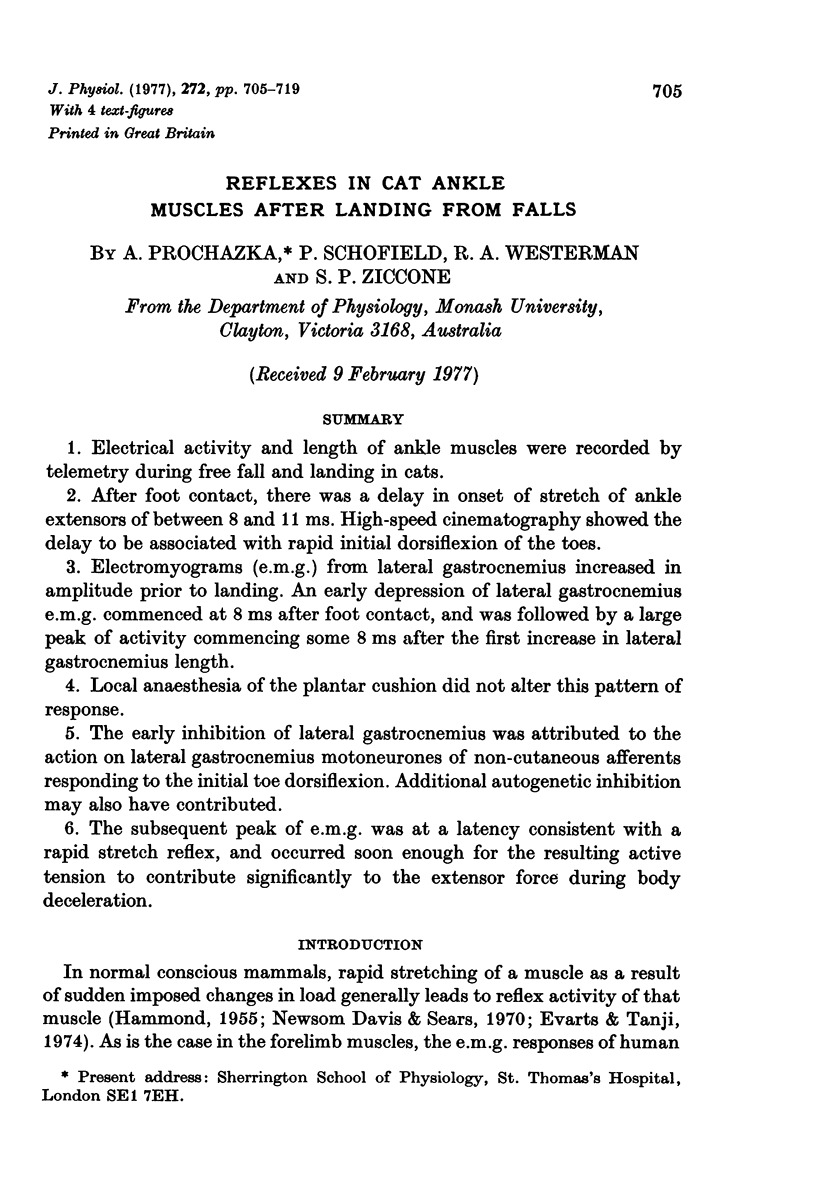
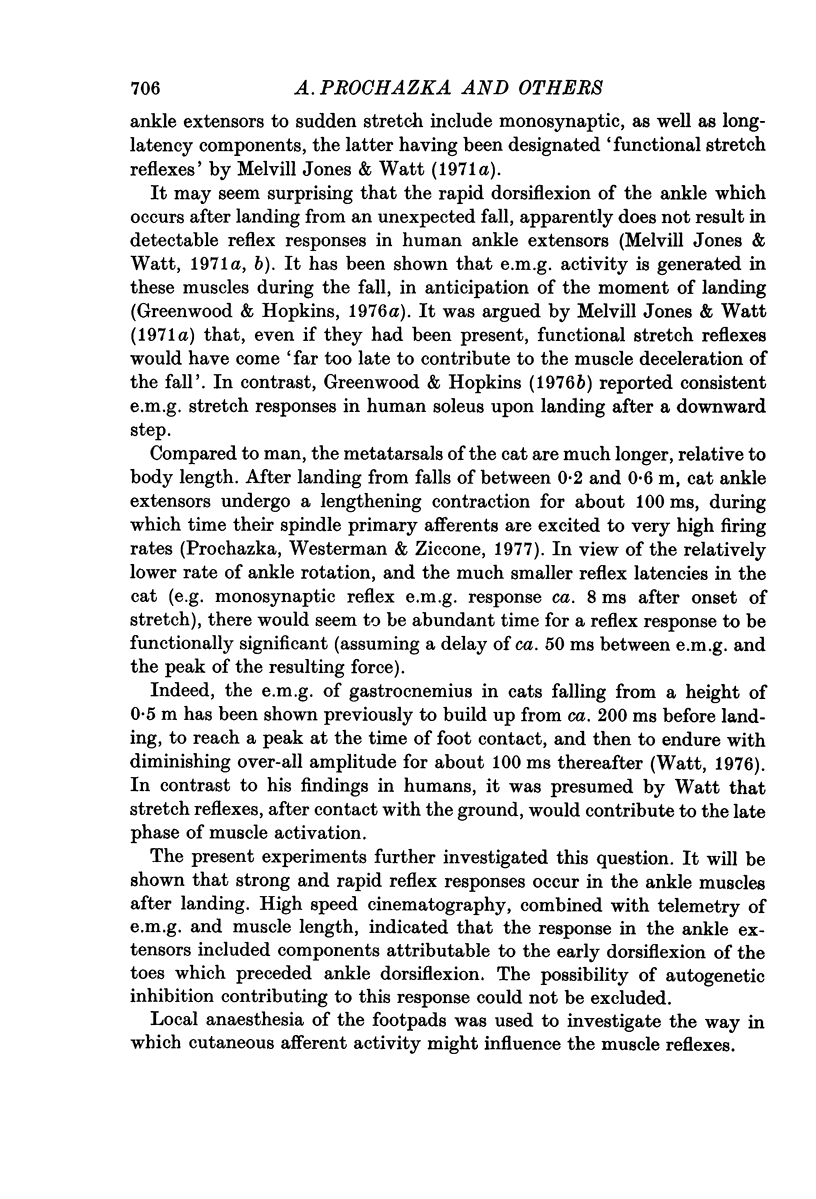
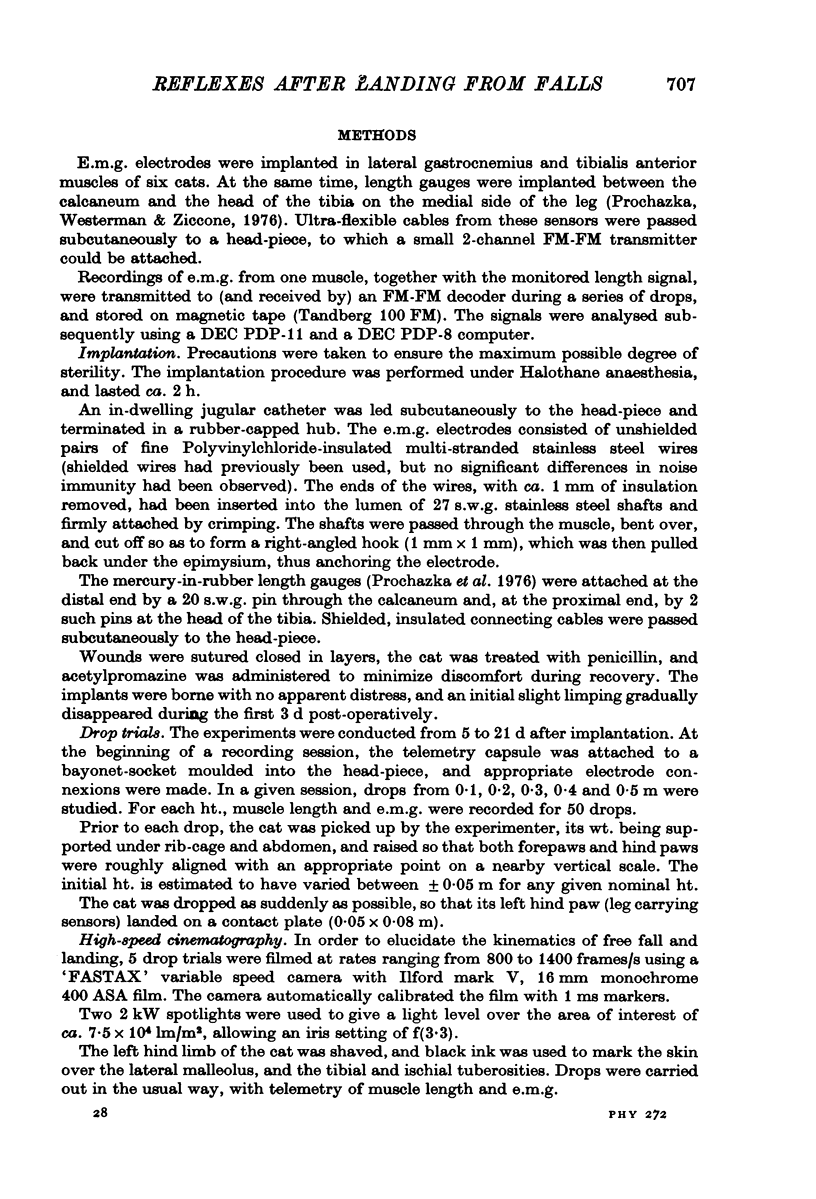
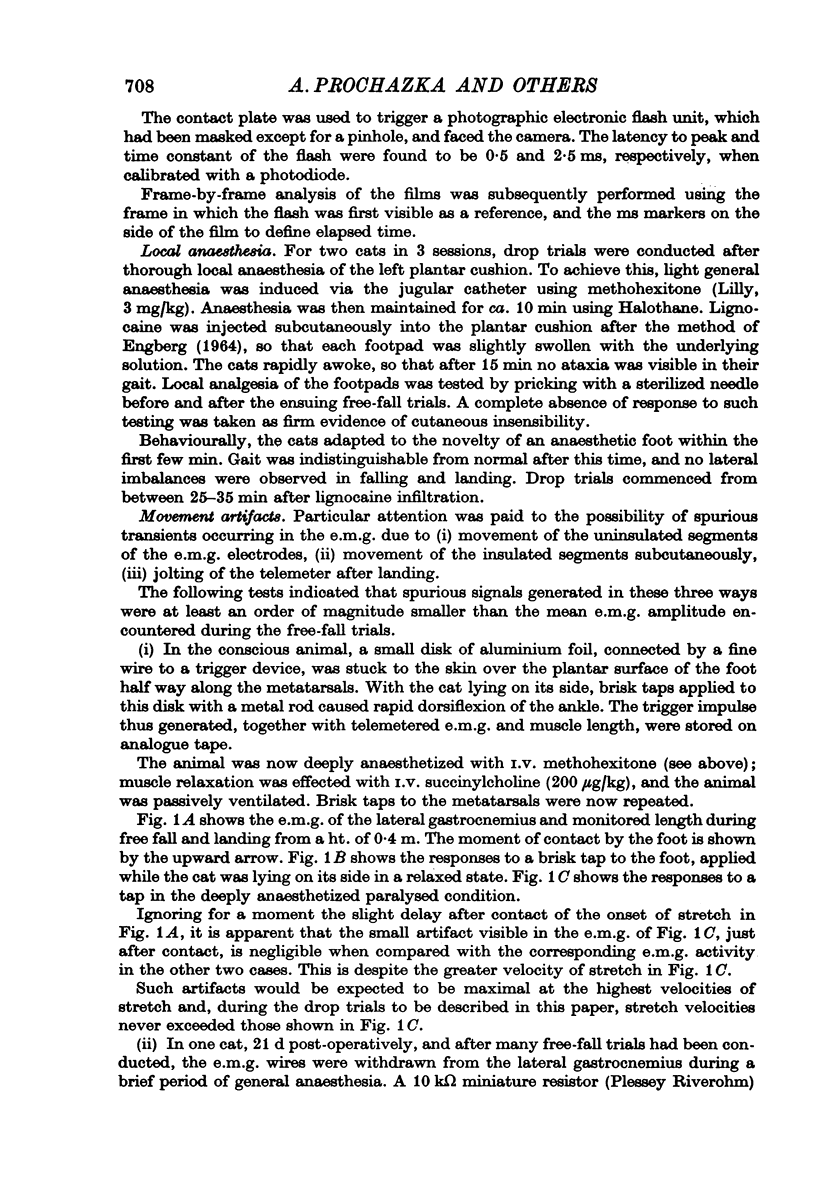
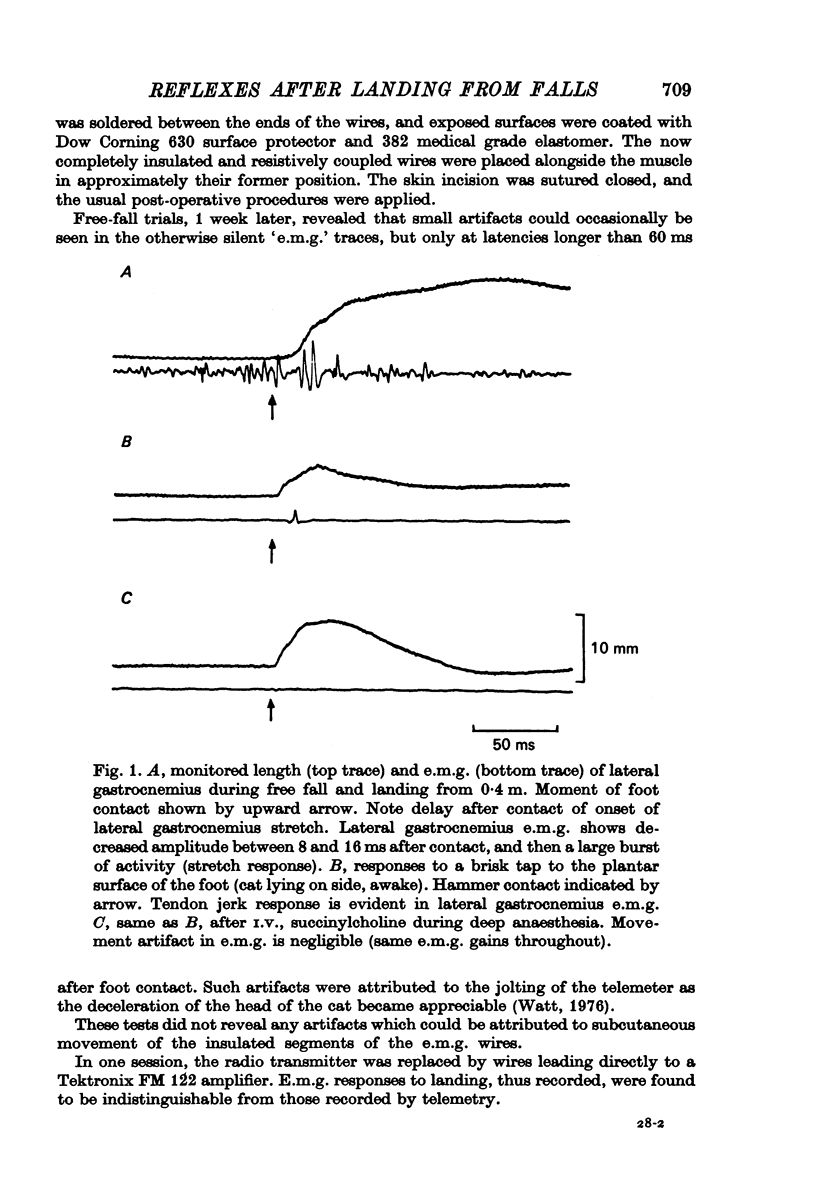
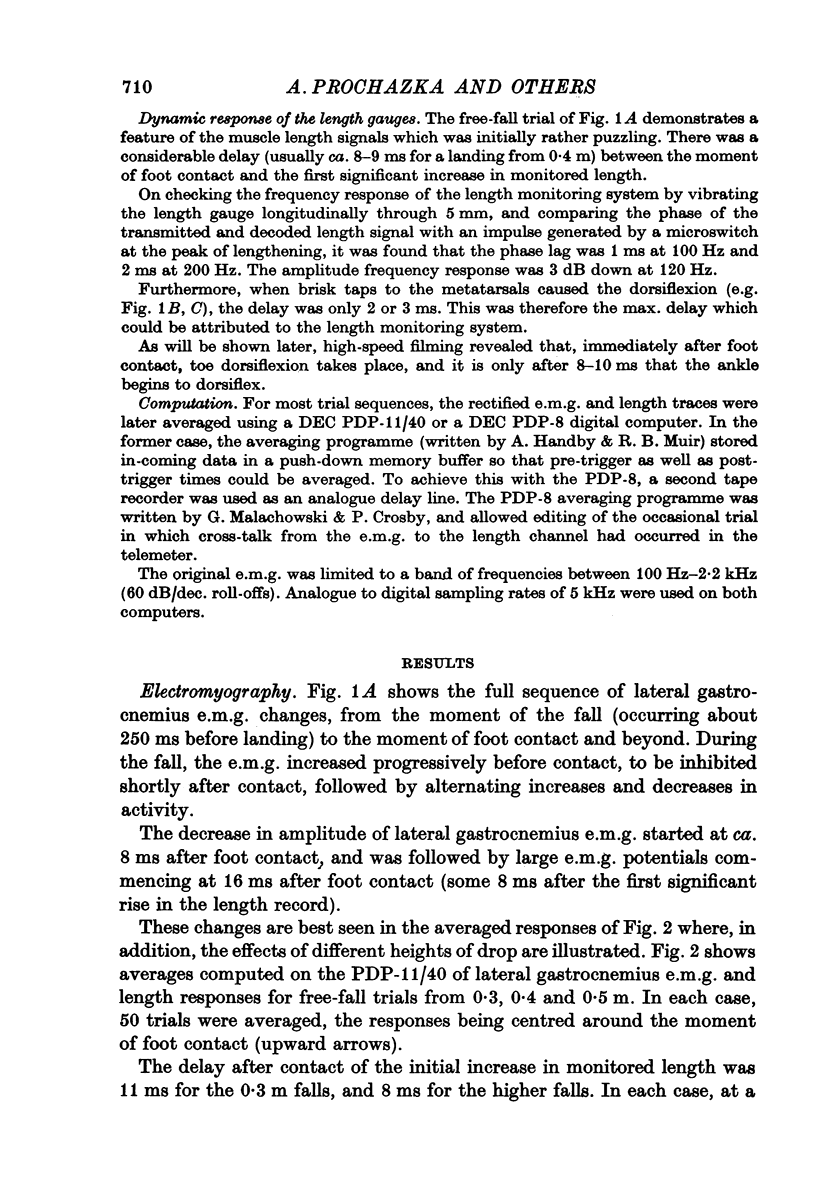
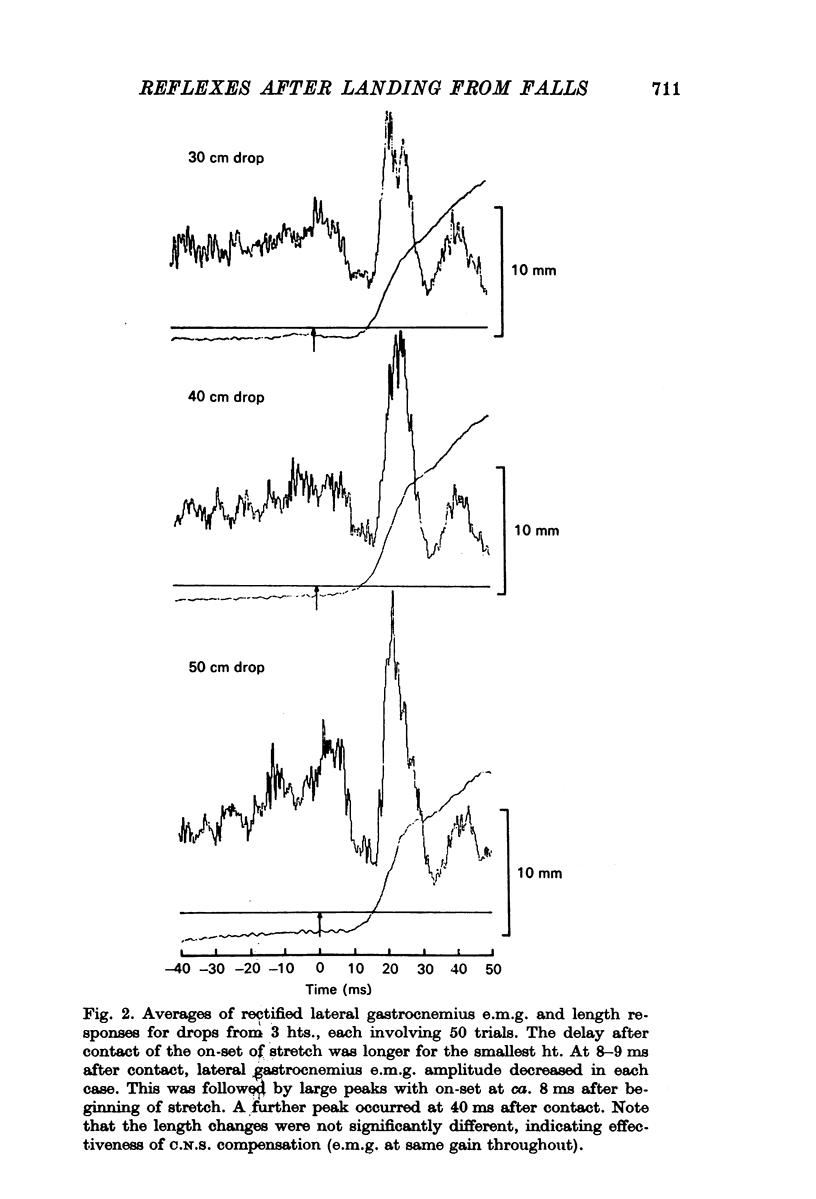
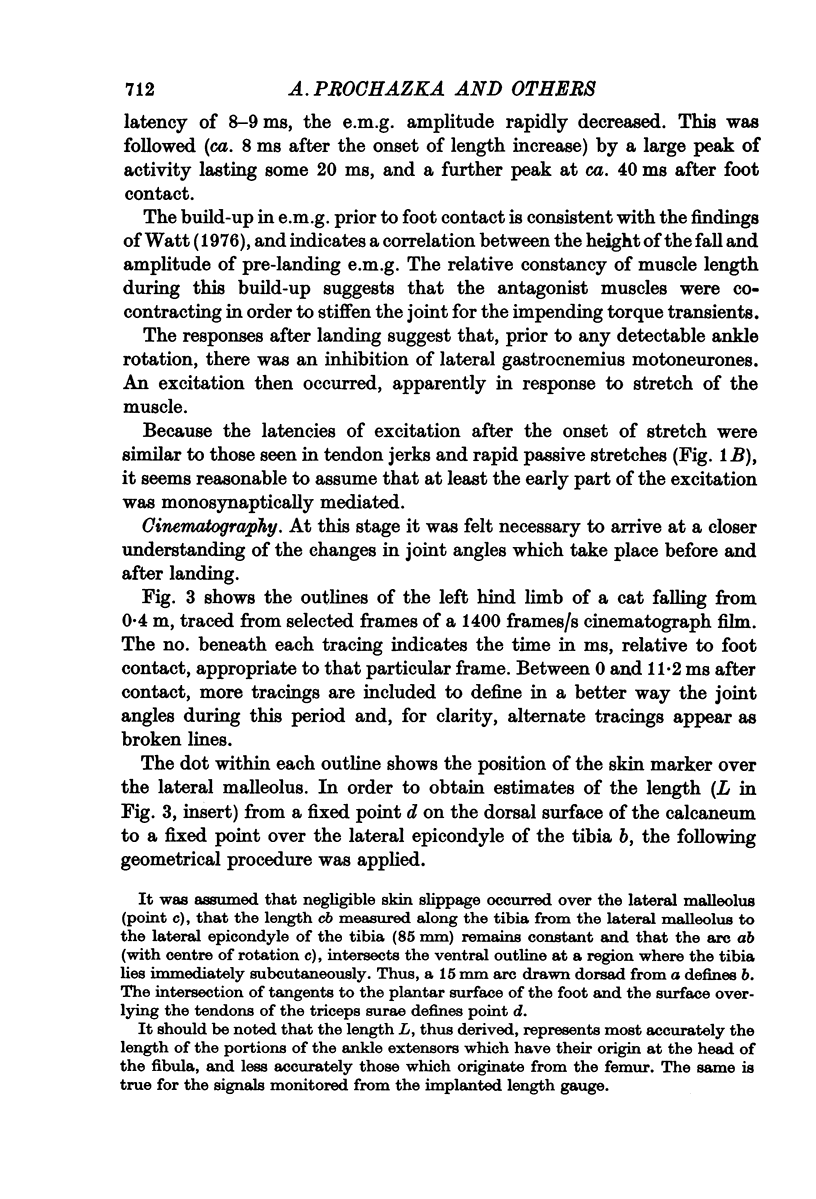
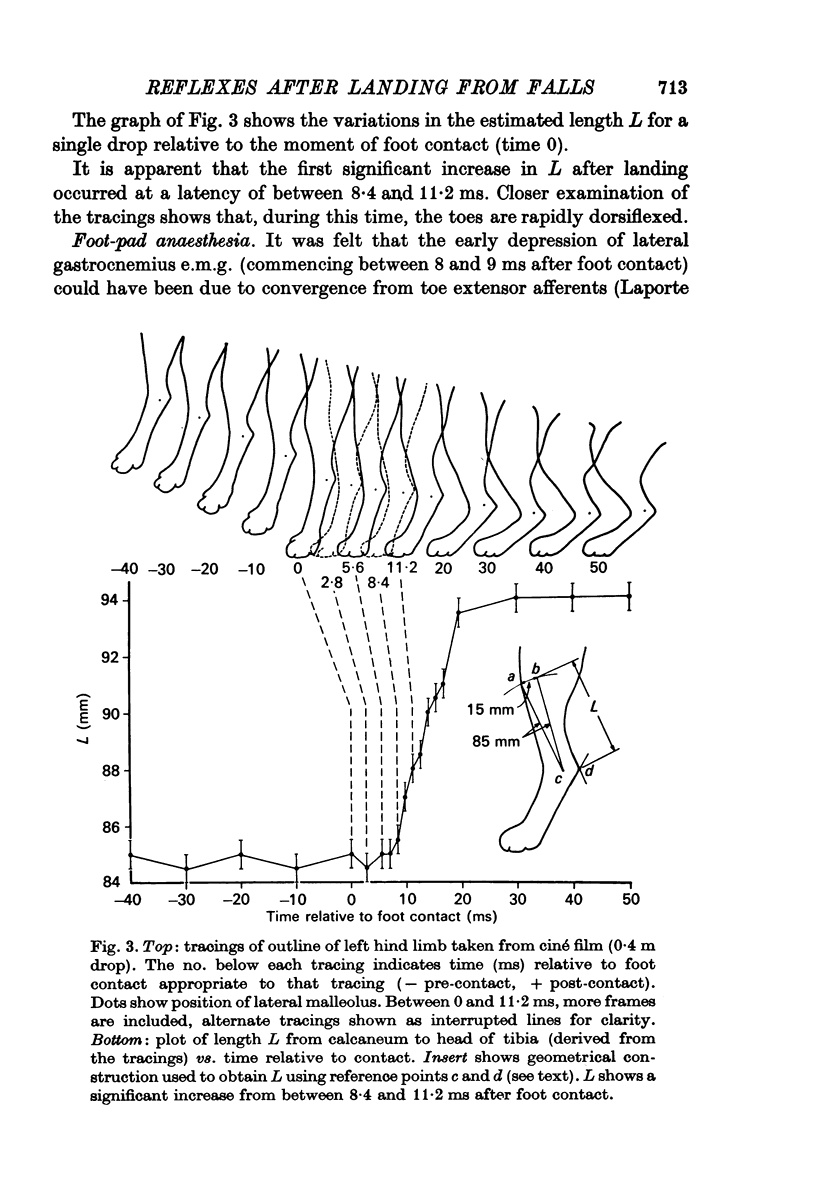
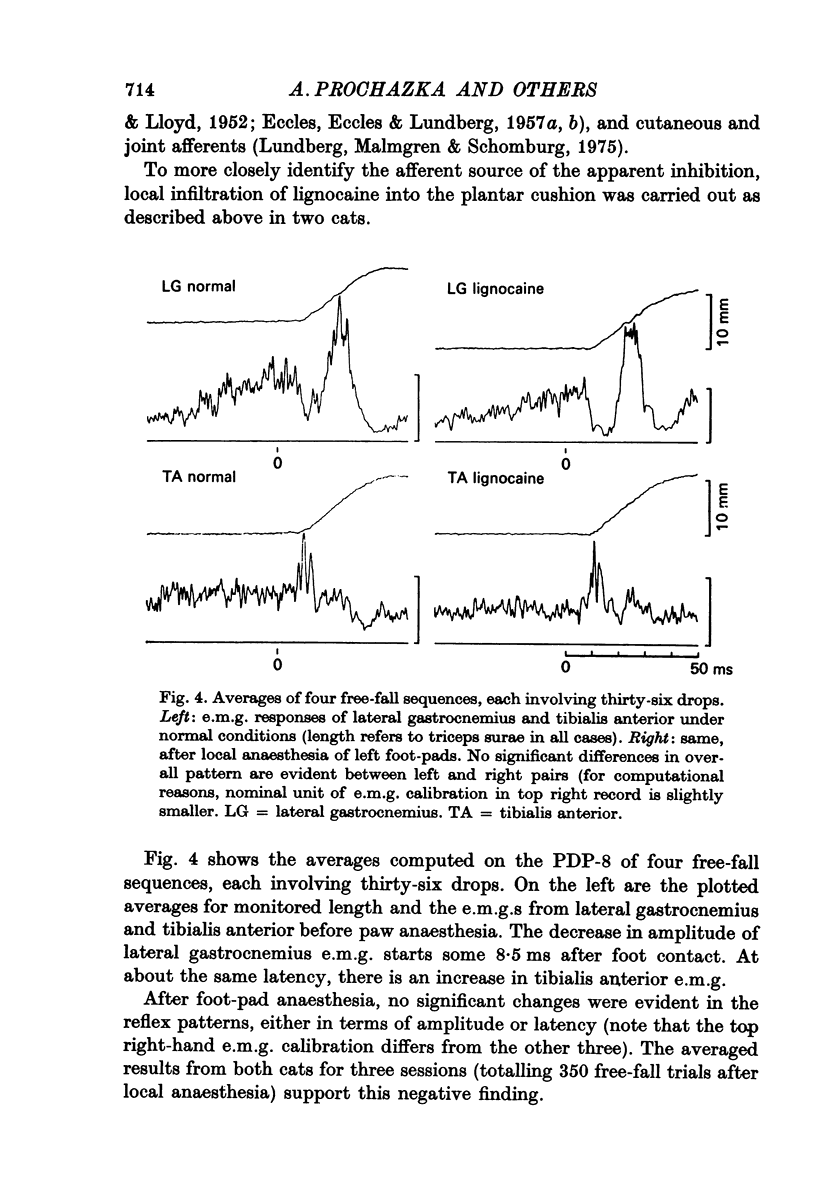
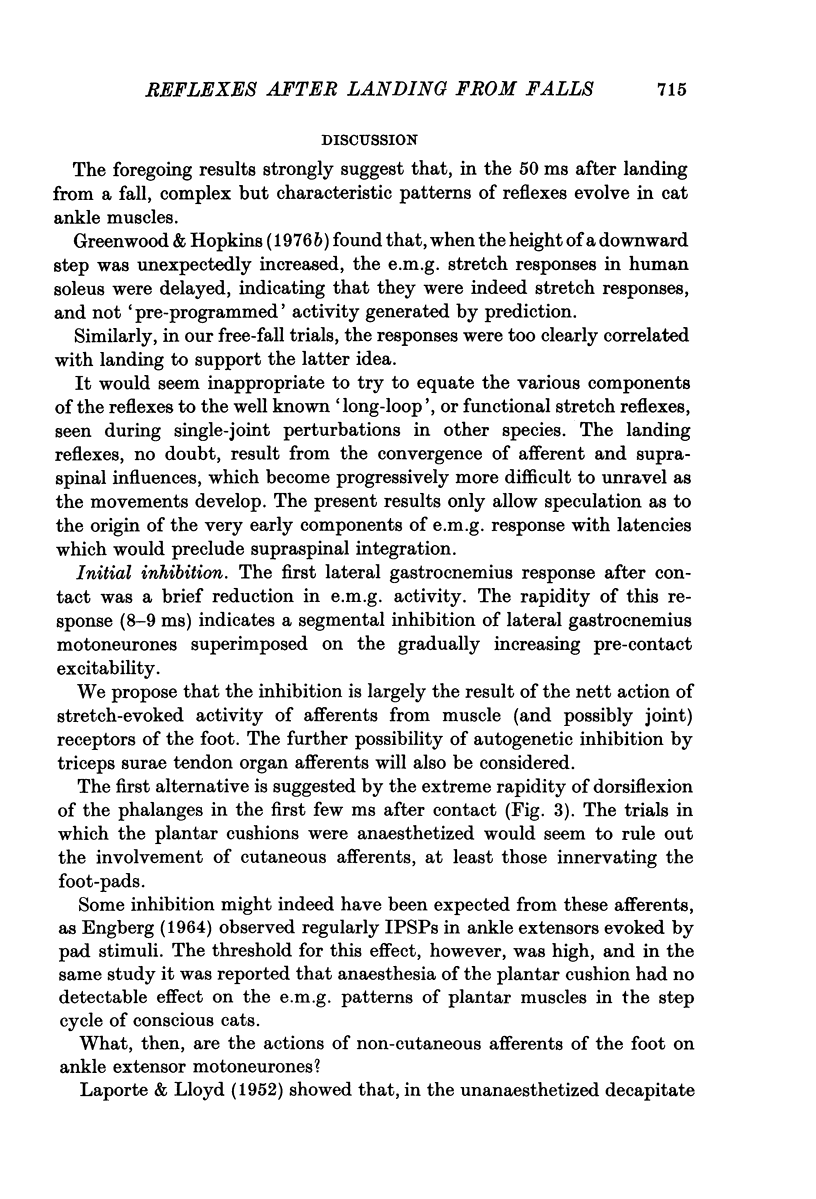
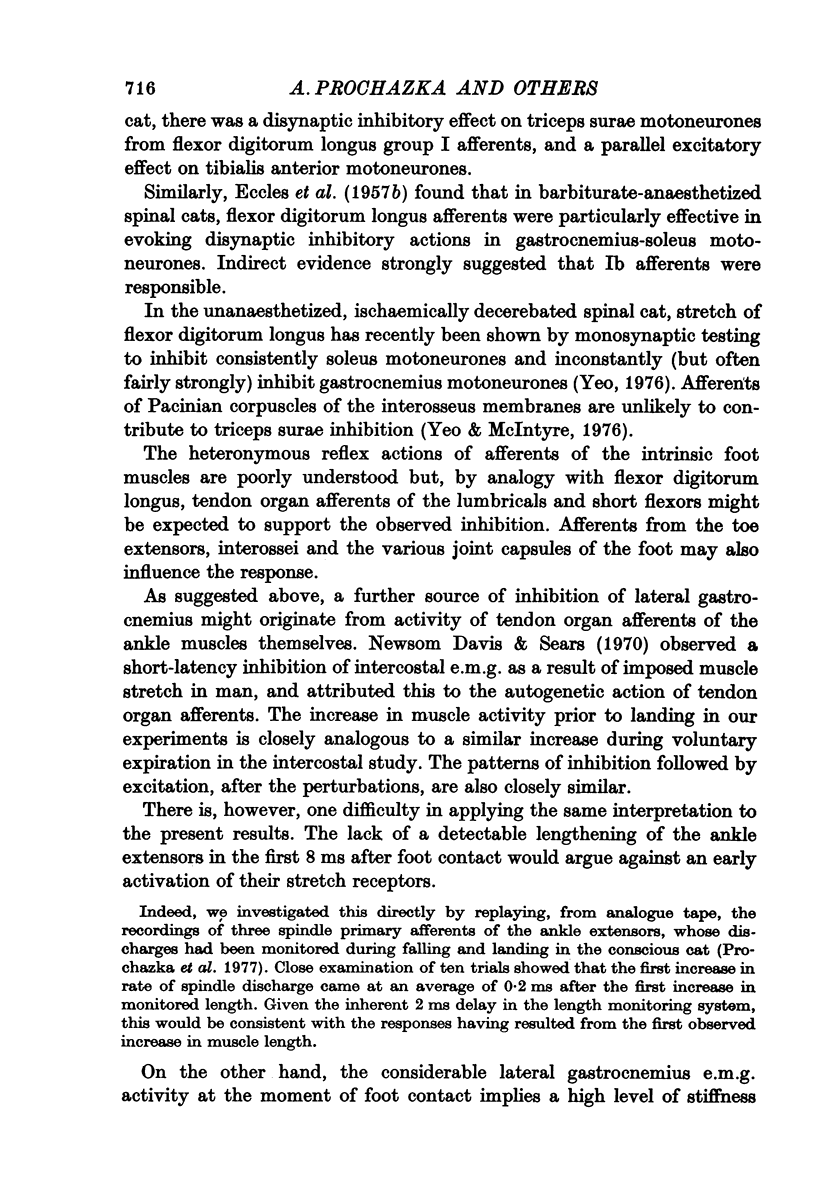
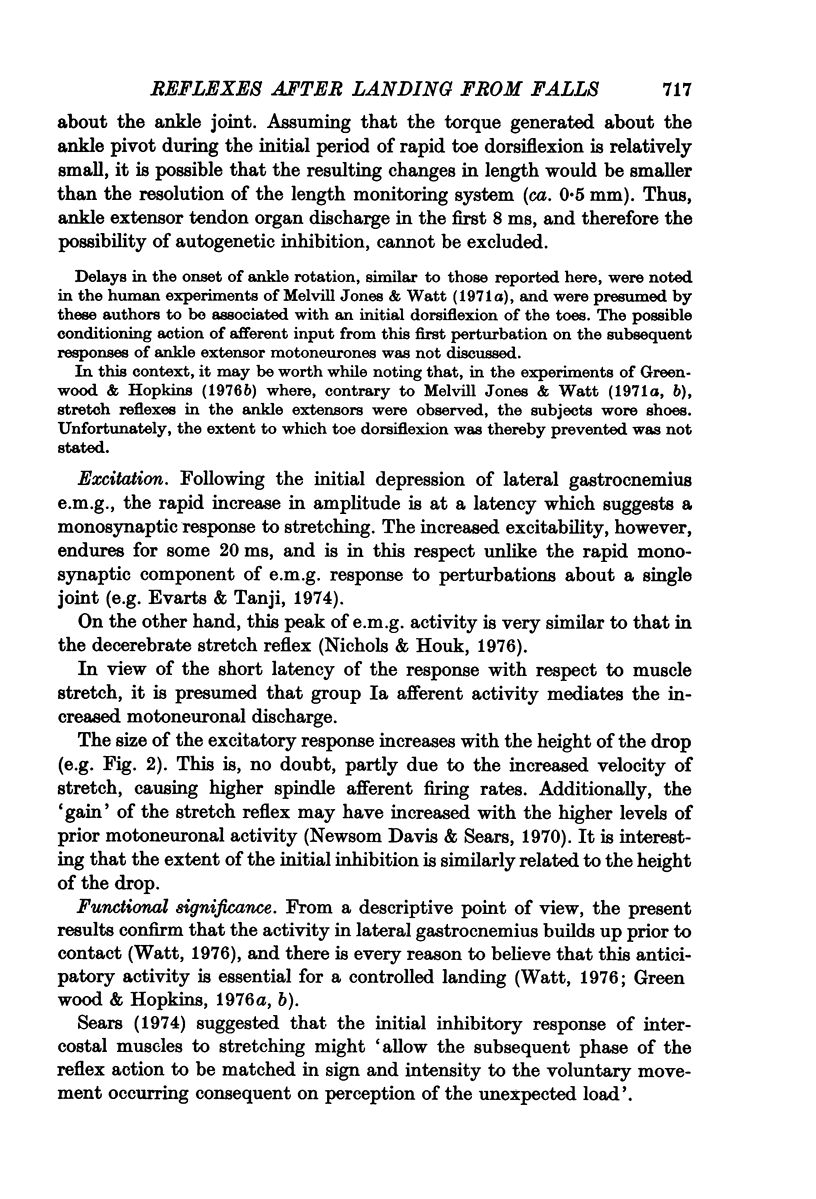
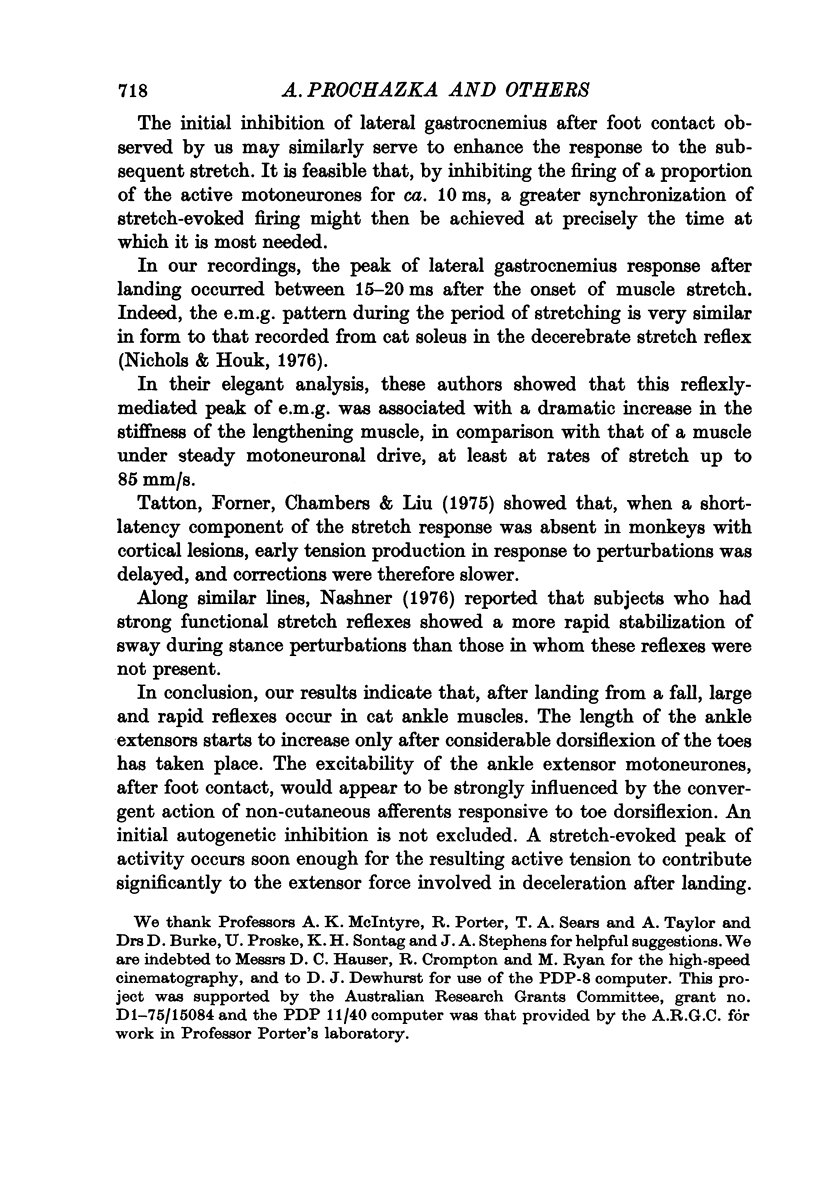
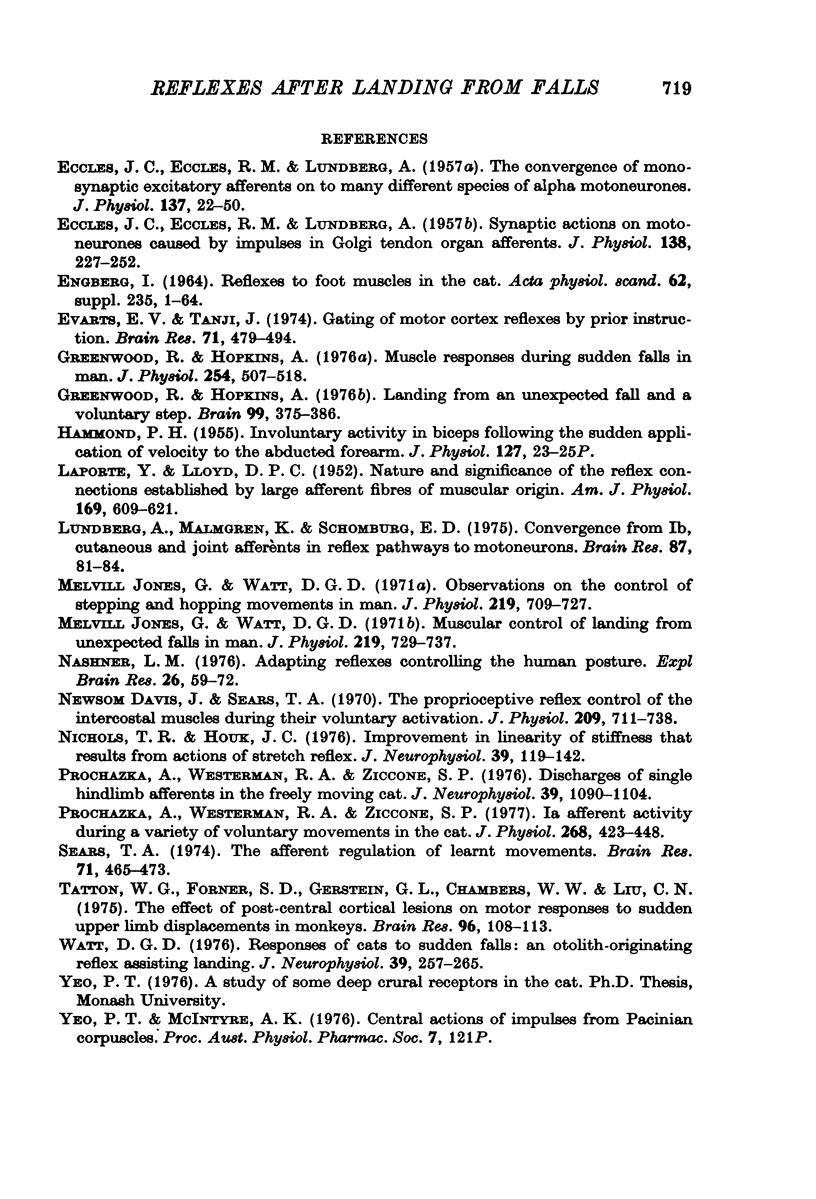
Selected References
These references are in PubMed. This may not be the complete list of references from this article.
- Davis J. N., Sears T. A. The proprioceptive reflex control of the intercostal muscles during their voluntary activation. J Physiol. 1970 Aug;209(3):711–738. doi: 10.1113/jphysiol.1970.sp009188. [DOI] [PMC free article] [PubMed] [Google Scholar]
- ECCLES J. C., ECCLES R. M., LUNDBERG A. Synaptic actions on motoneurones caused by impulses in Golgi tendon organ afferents. J Physiol. 1957 Sep 30;138(2):227–252. doi: 10.1113/jphysiol.1957.sp005849. [DOI] [PMC free article] [PubMed] [Google Scholar]
- ECCLES J. C., ECCLES R. M., LUNDBERG A. The convergence of monosynaptic excitatory afferents on to many different species of alpha motoneurones. J Physiol. 1957 Jun 18;137(1):22–50. doi: 10.1113/jphysiol.1957.sp005794. [DOI] [PMC free article] [PubMed] [Google Scholar]
- Evarts E. V., Tanji J. Gating of motor cortex reflexes by prior instruction. Brain Res. 1974 May 17;71(2-3):479–494. doi: 10.1016/0006-8993(74)90992-5. [DOI] [PubMed] [Google Scholar]
- Greenwood R., Hopkins A. Landing from an unexpected fall and a voluntary step. Brain. 1976 Jun;99(2):375–386. doi: 10.1093/brain/99.2.375. [DOI] [PubMed] [Google Scholar]
- Greenwood R., Hopkins A. Muscle responses during sudden falls in man. J Physiol. 1976 Jan;254(2):507–518. doi: 10.1113/jphysiol.1976.sp011242. [DOI] [PMC free article] [PubMed] [Google Scholar]
- Jones G. M., Watt D. G. Muscular control of landing from unexpected falls in man. J Physiol. 1971 Dec;219(3):729–737. doi: 10.1113/jphysiol.1971.sp009685. [DOI] [PMC free article] [PubMed] [Google Scholar]
- Jones G. M., Watt D. G. Observations on the control of stepping and hopping movements in man. J Physiol. 1971 Dec;219(3):709–727. doi: 10.1113/jphysiol.1971.sp009684. [DOI] [PMC free article] [PubMed] [Google Scholar]
- LAPORTE Y., LLOYD D. P. C. Nature and significance of the reflex connections established by large afferent fibers of muscular origin. Am J Physiol. 1952 Jun;169(3):609–621. doi: 10.1152/ajplegacy.1952.169.3.609. [DOI] [PubMed] [Google Scholar]
- Lundberg A., Malmgren K., Schomburg E. D. Convergence from Lb, cutaneous and joint afferents in reflex pathways to motoneurones. Brain Res. 1975 Apr 4;87(1):81–84. doi: 10.1016/0006-8993(75)90783-0. [DOI] [PubMed] [Google Scholar]
- Nashner L. M. Adapting reflexes controlling the human posture. Exp Brain Res. 1976 Aug 27;26(1):59–72. doi: 10.1007/BF00235249. [DOI] [PubMed] [Google Scholar]
- Nichols T. R., Houk J. C. Improvement in linearity and regulation of stiffness that results from actions of stretch reflex. J Neurophysiol. 1976 Jan;39(1):119–142. doi: 10.1152/jn.1976.39.1.119. [DOI] [PubMed] [Google Scholar]
- Prochazka A., Westerman R. A., Ziccone S. P. Discharges of single hindlimb afferents in the freely moving cat. J Neurophysiol. 1976 Sep;39(5):1090–1104. doi: 10.1152/jn.1976.39.5.1090. [DOI] [PubMed] [Google Scholar]
- Prochazka A., Westerman R. A., Ziccone S. P. Ia afferent activity during a variety of voluntary movements in the cat. J Physiol. 1977 Jun;268(2):423–448. doi: 10.1113/jphysiol.1977.sp011864. [DOI] [PMC free article] [PubMed] [Google Scholar]
- Sears T. A. The afferent regulation of learnt movements. Brain Res. 1974 May 17;71(2-3):465–473. doi: 10.1016/0006-8993(74)90990-1. [DOI] [PubMed] [Google Scholar]
- Tatton W. G., Forner S. D., Gerstein G. L., Chambers W. W., Liu C. N. The effect of postcentral cortical lesions on motor responses to sudden upper limb displacements in monkeys. Brain Res. 1975 Oct 10;96(1):108–113. doi: 10.1016/0006-8993(75)90580-6. [DOI] [PubMed] [Google Scholar]


